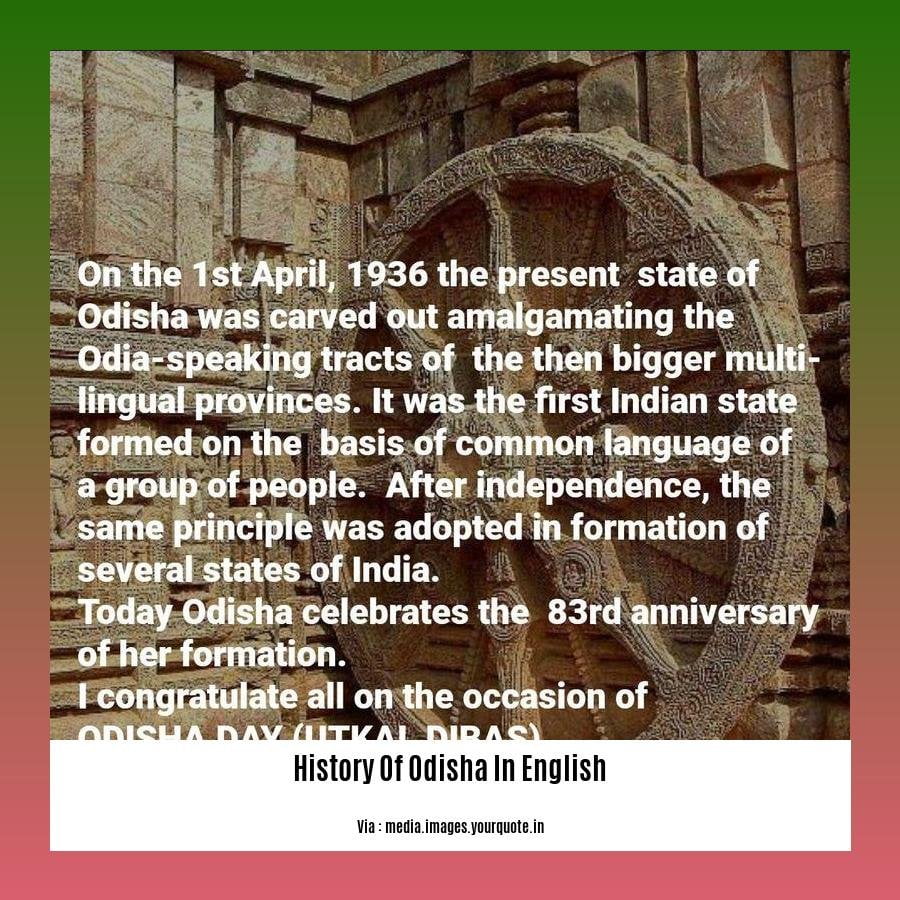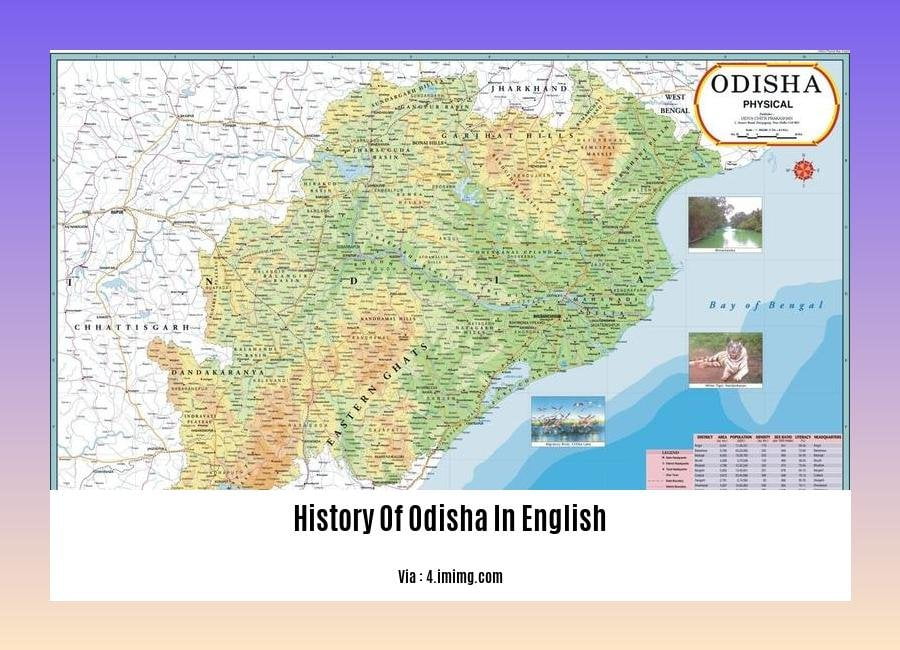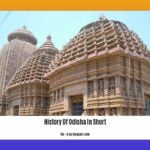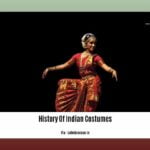Embark on an enthralling journey through the annals of time as we unveil the captivating history of Odisha in English. Delve into the depths of ancient kingdoms, decipher cryptic inscriptions, and unravel the significance of remarkable archaeological discoveries. Odisha, a region steeped in rich cultural heritage, beckons you to explore its storied past, brought to life with the insights of an established history scholar. Prepare to be captivated as we trace the evolution of Odisha’s dynasties and shed light on the region’s pivotal role in shaping the tapestry of Indian history. [A Journey Through Time: Unveiling the History of Odisha in English] promises to be an illuminating exploration of a land where history whispers secrets of grandeur, resilience, and cultural triumph.
Key Takeaways:
Odisha’s history spans back 140 million years, originating as part of the supercontinent Gondwana.
Odisha experienced the rise and fall of various empires, such as the Mauryan, Kalinga, Gupta, Ganga, and Gajapati dynasties.
The state faced invasions from external powers, including Afghans, Mughals, Nawabs of Bengal, and Marathas.
In the late 16th century, Mughal emperor Akbar conquered Odisha from the Afghans.
Odisha became a part of British India in the early 19th century.
History of Odisha in English

Odisha, an enchanting state in eastern India, boasts a remarkable history spanning over 140 million years, dating back to its formation as part of the supercontinent Gondwana.
Early Kingdoms and Empires
- The Mauryan Empire, under Emperor Ashoka, extended its influence over Odisha in the 3rd century BC, marking a period of cultural and administrative growth.
- The mighty Kalinga Kingdom, renowned for its military prowess, emerged in the 3rd century BC under King Kharavela, leaving behind a legacy of architectural wonders and maritime trade.
- The Gupta Empire, ruling from the 4th to the 6th century AD, ushered in a golden age of art, literature, and scientific advancements in Odisha.
Medieval Era
- The Ganga dynasty, originating in the 5th century AD, ruled over Odisha for nearly six centuries, leaving behind a trail of magnificent temples and artistic creations.
- The Gajapati dynasty, rising to power in the 15th century, consolidated Odisha’s territory and ushered in a glorious period of military conquests.
Foreign Invasions
- Odisha faced repeated invasions from external powers over the centuries, including the Afghans, Mughals, Nawabs of Bengal, and Marathas.
- In the late 16th century, the Mughal emperor Akbar conquered Odisha, incorporating it into the Mughal Empire.
British Rule and Independence
- The British East India Company gained control of Odisha in the early 19th century, ruling it as part of Bengal Presidency.
- Odisha became a separate province of British India in 1936, experiencing social and economic reforms during the British Raj.
- India gained independence in 1947, and Odisha emerged as a state within the newly formed Indian Union.
Present-day Odisha
- Contemporary Odisha is a vibrant state known for its rich cultural heritage, diverse cuisine, and natural beauty.
- The state is home to numerous ancient temples, such as the UNESCO World Heritage Site Konark Sun Temple, showcasing its architectural prowess.
- Modern Odisha remains a significant contributor to India’s economy, with industries ranging from agriculture and manufacturing to tourism playing key roles in its development.
Do you want to explore the rich historical background of Nigeria’s legal system? Head over to ../history-of-nigeria-legal-system and delve into the evolution of laws and regulations in this vibrant nation.
Unravel the captivating history of social studies education in Nigeria by visiting ../history-of-nigeria-social-studies-education. Discover how this field has shaped the educational landscape and provided invaluable insights into the nation’s cultural and societal development.
Take a short journey through the annals of Odisha’s history by exploring ../history-of-odisha-in-short. Uncover the fascinating events, rulers, and cultural influences that have shaped this enchanting Indian state.
British Colonial Rule and Independence Movement

A tale of struggle, resilience, and triumph
The British Colonial Rule in Odisha, referred to as the British Raj, signified a period of transformation and struggle. It commenced in 1858, following the British taking over the Bengal Presidency, which included Odisha. Known for their strategic resource-seeking and expansionist policies, the British introduced various administrative and economic changes during their rule.
From agrarian policies favoring cash crops like jute and indigo to introducing a modern education system, the colonial impact extended to various spheres of life. While these changes aimed to modernize the region, they also resulted in exploitation and discontent among the local population.
The seeds of the independence movement in Odisha were sown during British rule, with notable leaders like Surendranath Das and Madhusudan Das spearheading the struggle. The creation of the Odisha Province in 1936 marked a significant milestone in Odisha’s journey towards self-governance.
Finally, on 27th May 1947, Odisha, along with the rest of India, achieved independence under the leadership of Harekrushna Mahatab, the first Chief Minister of Odisha. The struggle for independence had ended, but the journey towards progress had just begun.
Key Takeaways:
British Colonial Rule in Odisha lasted from 1858 to 1947, leaving a lasting impact on the region.
The British introduced administrative and economic changes, such as agrarian policies and a modern education system.
The independence movement in Odisha gained momentum under leaders like Surendranath Das and Madhusudan Das.
The creation of Odisha Province in 1936 was a pivotal moment in the journey towards self-governance.
On 27th May 1947, Odisha achieved independence under the leadership of Harekrushna Mahatab.
Sources:
History of Odisha – Important Events, Kingdoms, British Raj, And More
Post-Independence Era: Socio-Economic Transformation
In the wake of India’s independence in 1947, Odisha embarked on a new chapter in its history, characterized by profound socio-economic transformations.
Economic Growth and Industrialization
The post-independence era witnessed a significant economic expansion in Odisha. The state’s economy diversified, with the service sector emerging as a प्रमुख driver of growth. Industries such as IT, telecommunications, and tourism flourished, contributing to increased employment opportunities and improved living standards. The expansion of the manufacturing sector also played a crucial role, particularly in the urban areas.
Rise of the Service Sector
The service sector emerged as a pillar of Odisha’s economy in the post-independence era. The state attracted investments in IT, telecommunications, and tourism, creating a vibrant ecosystem for these industries. The growth of the service sector led to an increase in employment opportunities and a rise in the standard of living for many Odias.
Infrastructure Development
The government’s focus on infrastructure development played a significant role in Odisha’s economic transformation. The state invested heavily in roads, railways, and airports, improving connectivity and facilitating the movement of goods and people. This infrastructure development also contributed to the growth of tourism, as Odisha became more accessible to both domestic and international visitors.
Regional Disparities
Despite the overall economic growth, Odisha faced challenges in addressing regional disparities. Some districts outpaced others in terms of economic development, leading to income inequalities and uneven distribution of opportunities. The government implemented various policies and programs aimed at reducing these disparities and promoting inclusive growth across the state.
Key Takeaways:
Economic Growth: Odisha’s economy has grown significantly since independence, with the service sector emerging as a प्रमुख driver.
Industrialization: The manufacturing sector has also played a crucial role in the state’s economic development, particularly in urban areas.
Infrastructure Development: The government’s focus on infrastructure development has improved connectivity and facilitated economic growth.
Regional Disparities: Odisha faces challenges in addressing regional disparities, with some districts lagging behind in terms of economic development.
Government Initiatives: The government has implemented policies and programs to reduce regional disparities and promote inclusive growth.
Citations:
[1] Growth and Regional Disparities in Odisha: An Analysis in the Post-Reform Era
[2] Examining Growth–Inequality Nexus in Post-reform Odisha: A Sectoral Decomposition Analysis
Cultural Heritage and Artistic Legacy
In the heart of India, where the sun-kissed shores of the Bay of Bengal merge with ancient lands, there exists a realm steeped in time-honored traditions and an artistic legacy that transcends generations
Odisha, a state that echoes with tales of a rich past, boasts a Cultural Heritage and Artistic Legacy that is as diverse as it is awe-inspiring. Immerse yourself in the beauty of the Jagannath Temple, a marvel of architectural mastery dedicated to Lord Jagannath. Adorned with intricate carvings and towering spires, this sacred abode is a testament to the enduring devotion of the Odia people.
Venture further, and uncover the mysteries of the Konark Sun Temple, an emblem of architectural brilliance. Built-in the 13th century by King Narasimhadeva I, this UNESCO World Heritage Site is a symphony in stone, a testament to the artistic genius of Odisha’s artisans. Its intricate sculptures narrate tales from Hindu mythology, while the temple’s design mirrors the chariot of the Sun God, Surya, as it journeys across the heavens.
The Cultural Heritage and Artistic Legacy of Odisha extends far beyond its stunning temples. The state is home to a vibrant tapestry of traditional handicrafts, each a masterpiece in its own right. From the intricate filigree work of silver jewelry to the vibrant hues of Sambalpuri textiles, Odisha’s artisans weave their dreams into tangible works of art. Explore the bustling bazaars, where the air crackles with creativity, and the colors of Odisha’s heritage shine through.
In the realm of music and dance, Odisha’s contribution is equally profound. Odissi, the classical dance form that originated in the temples of Odisha, is a graceful expression of devotion and artistry. Its fluid movements, lyrical grace, and intricate mudras captivate audiences worldwide, showcasing the depth and richness of Odia culture.
Key Takeaways:
- Odisha’s Cultural Heritage and Artistic Legacy is a tapestry woven with the threads of architectural wonders, traditional handicrafts, and performing arts.
- The state is home to iconic landmarks like the Jagannath Temple and the Konark Sun Temple, masterpieces of architecture and devotion.
- Odisha’s artisans excel in intricate silver filigree work and vibrant Sambalpuri textiles, showcasing their exceptional craftsmanship.
- Odissi, the classical dance form that originated in Odisha, is a graceful expression of devotion and artistry, captivating audiences with its fluid movements and intricate mudras.
- Odisha’s diverse cultural heritage is a source of pride and inspiration for its people and a treasure for the world to cherish.
Sources:
- Odisha’s Cultural Heritage and Artistic Legacy
- The Konark Sun Temple: A Symbol of Odisha’s Rich Cultural Heritage
FAQ
Q1: How long does Odisha’s history span?
A1: Odisha’s history is remarkably extensive, stretching back 140 million years to its formation as part of the supercontinent Gondwana.
Q2: What major empires ruled over Odisha in the past?
A2: Throughout its history, Odisha has witnessed the rise and fall of several notable empires, including the Mauryan, Kalinga, Gupta, Ganga, and Gajapati dynasties.
Q3: Did Odisha face invasions from external powers?
A3: Yes, Odisha has faced invasions from various external powers, including the Afghans, Mughals, Nawabs of Bengal, and Marathas.
Q4: When did Odisha come under British rule?
A4: Odisha became a part of British India during the early 19th century, bringing changes to the region’s governance and economy.
Q5: What was the initial period of British rule over Odisha called?
A5: The British rule over Odisha from 1858 to 1947 was known as the British Raj, a period that significantly impacted the region’s trajectory.
















